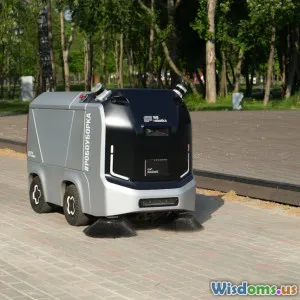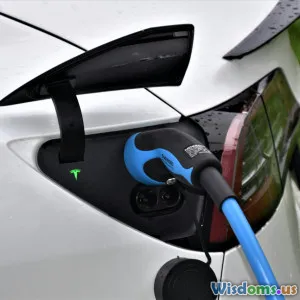
The Role of Big Data in Automotive Innovation
7 min read Explore how big data drives innovation in the automotive industry, transforming design, safety, and customer experience. (0 Reviews)
The Role of Big Data in Automotive Innovation
Introduction
In today's rapidly evolving automotive landscape, innovation is no longer fueled solely by mechanical engineering advancements but increasingly by data-driven intelligence. As vehicles become more connected and autonomous, the importance of big data has surged, offering unprecedented potential to optimize everything from design and manufacturing to on-road safety and driving experience. But how exactly is big data shaping the future of the automotive sector? This article delves into the transformative role data analytics plays, powering technological breakthroughs and redefining the way we conceive, build, and use vehicles.
Understanding Big Data in Automotive Context
Big data refers to vast volumes of structured and unstructured information generated from numerous sources. In the automotive sphere, sources include vehicle sensors, telematics devices, manufacturing lines, customer interactions, traffic systems, and even social media. This data is characterized not just by volume but also variety, velocity, and veracity—the so-called "4 Vs" of big data.
By leveraging advanced analytics, machine learning, and cloud computing, automotive stakeholders can extract actionable insights from this ocean of information. These insights enable smarter decision-making, predictive capabilities, enhanced customization, and efficiency improvements.
Big Data Transforming Automotive Innovation
1. Enhancing Vehicle Design and Manufacturing
Big data analytics empower engineers and designers to create vehicles that better meet consumer demands and regulatory requirements. For example, General Motors uses data from millions of on-road miles to study how vehicles perform in real-world conditions, enabling design tweaks that optimize durability, fuel efficiency, and safety features.
In manufacturing, predictive analytics applied to sensor data in assembly plants helps identify potential equipment failures before they cause downtime. Toyota’s Production System integration with big data analytics has resulted in more agile manufacturing processes and reduced waste, reinforcing lean manufacturing principles.
2. Revolutionizing Autonomous Driving Technologies
Autonomous vehicles (AVs) are quintessential examples of the synergy between big data and automotive innovation. AVs rely heavily on continuous streams of data from cameras, LiDAR sensors, radar, and GPS to make real-time driving decisions.
Companies like Waymo and Tesla collect and analyze petabytes of driving data daily to train their AI models for better situational awareness and decision-making under diverse road conditions. This massive data processing accelerates the development of safer and more reliable self-driving cars, pushing the envelope beyond human-driver capabilities.
3. Predictive Maintenance and Improved Vehicle Health
Big data enables predictive maintenance by analyzing vehicle sensor data to anticipate component wear or failure before breakdowns occur. For instance, Volvo uses telematics data from its fleet to monitor engine health and alert drivers or fleet managers to potential issues.
This predictive approach reduces unexpected repairs, lowers maintenance costs, and minimizes vehicle downtime. Moreover, it enhances safety by preventing failures that could lead to accidents.
4. Personalizing the Driver Experience
Data collected from driver behavior, preferences, and environmental contexts allows automakers to offer tailored experiences. Advanced infotainment systems can recommend navigation routes based on past habits or streaming music that matches the driver’s mood.
BMW’s ConnectedDrive services integrate big data analytics to provide personalized recommendations and vehicle over-the-air updates, ensuring a continuously improved driving environment.
5. Smart Mobility and Urban Planning
Beyond individual vehicles, big data influences city-wide traffic management and mobility solutions. By analyzing traffic flow, congestion patterns, and public transport usage, urban planners can design smarter infrastructure that reduces emissions and travel time.
Ford's City of Tomorrow program, for example, collaborates with municipalities to harness big data for creating integrated mobility networks, involving autonomous vehicles, ride-sharing, and public transit to alleviate urban congestion.
Real-World Impact and Industry Insights
- Data Scale: Industry reports forecast that connected vehicles will generate over 500GB of data per vehicle per day by 2025, emphasizing the scale of information needing analysis.
- Economic Benefits: A McKinsey study estimates that data-driven maintenance alone could save the automotive industry over $70 billion annually by reducing costs and downtime.
- Quote: Mike Ramsey, Vice President at Gartner, stated, "Big data goes beyond analytics; it enables automakers to innovate with precision and agility previously unimaginable."
Challenges and Considerations
While big data holds transformative potential, challenges such as data privacy, cybersecurity, and the need for robust data infrastructure remain focal points. Manufacturers must ensure compliance with regulations like GDPR and implement strong encryption to protect consumer data.
Moreover, the diversity of data sources requires standardization and interoperability frameworks to make disparate data sets coherent and usable.
Conclusion
Big data stands as a cornerstone of modern automotive innovation, driving advances that enhance safety, efficiency, personalization, and sustainability. From autonomous driving breakthroughs to smarter manufacturing and maintenance, the ability to harness expansive data resources defines competitive advantage in the auto industry. As technology evolves, continued investment in data analytics capabilities will unlock even more revolutionary advancements, accelerating our journey toward smarter, more connected, and highly adaptive vehicles.
For automotive professionals and enthusiasts alike, understanding and embracing big data technologies is key to navigating the transformative road ahead and cultivating innovation that truly revolutionizes how we move.
Rate the Post
User Reviews
Popular Posts




















